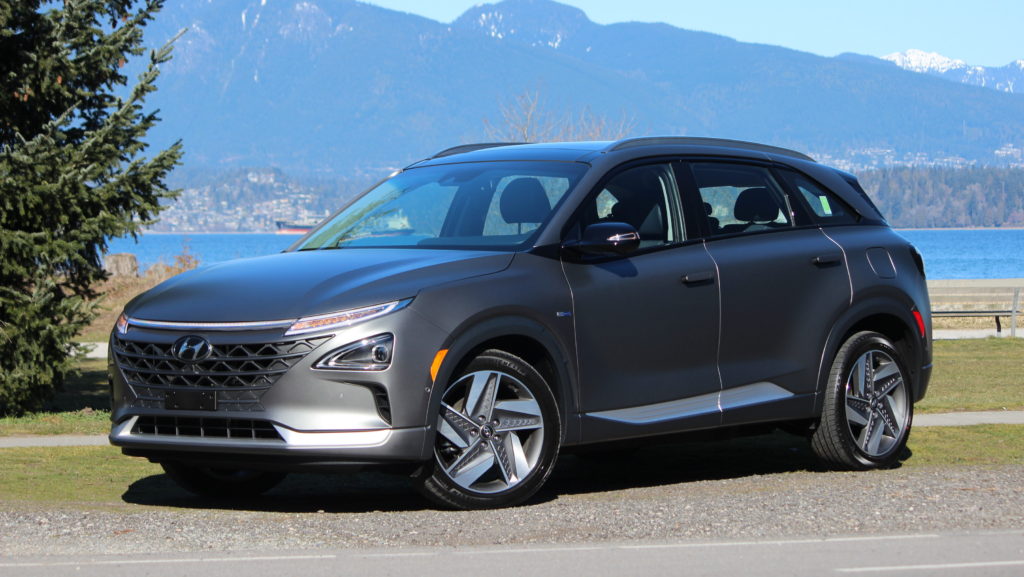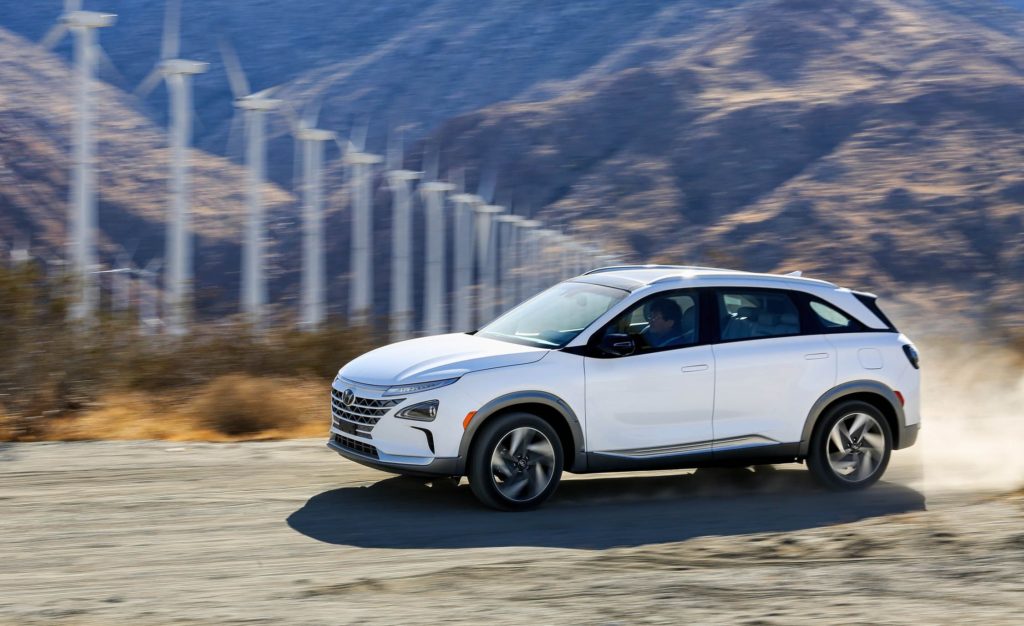Underneath the rear of the Nexo are three tanks containing a total of 157 liters of liquid hydrogen compressed to more than 700 times normal atmospheric pressure.
The hydrogen is fed, together with air, into an anode/cathode fuel cell under the Nexo’s bonnet causing a chemical reaction generating heat, electricity, and water.
The water is ejected from a pipe like an exhaust and the electricity produced powers a 161bhp motor which drives the front wheels.
There’s also a small 1.56kWh lithium-ion battery storing electricity from regenerative braking which can be fed in when needed.
All good science, but, where do we get the hydrogen?
There are 12 hydrogen filling stations in this UK while Germany has 50. Ironically, there are four within 20 miles of West London.

If you could ever find a hydrogen pump, it’s simple – you open a flap above the rear wheel, connect a hose and then wait around five minutes while the tanks are filled. The hydrogen is measured in kg and that’s the unit it’s sold in.
The tanks hold a maximum of 6.3kg of hydrogen which should give the Nexo a maximum range of 414 miles WLTP.
Nothing about driving this car is cheap and that’s to be expected for a breakthrough technology that’s still very niche.
The hydrogen itself will become cheaper, especially if it is produced using renewable energy, as will the fuel cell technology itself.
Hyundai only offers the Nexo in one trim level and loads it with the kit so there are hardly any options available.
Just as well, because after the Government’s Plug-In Car Grant the Nexo costs 84.450 USD. About the same as a Jaguar I-Pace.

In size, the Nexo is similar to a Volkswagen Tiguan with a relatively high seating position.
While no beauty, it’s OK to look at and it’s better inside.
Rather than follow the trend and have most functions controlled via digital screens, Hyundai has equipped the Nexo with a center console that wouldn’t look out of place in an Airbus.
I like conventional knobs, switches, and buttons but the number of them on the console is a bit confusing.
The power delivery has that same instant torque feel anyone who’s driven an EV will know. The car is not quick but has plenty of pep between 30 and 50mph.
Thrashing around in an EV or FCV (fuel cell vehicle) is a very bad idea anyway as it crucifies range. Drive the Nexo like that and you’ll not get anywhere near that 414-mile range.




